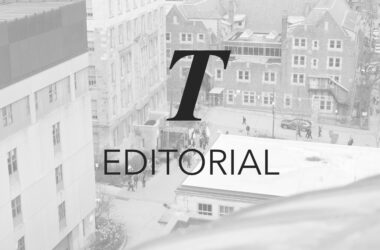McGill states in its Charter of Students’ Rights that it is obligated “to ensure that adequate measures are taken to protect security of students on University property.” Montreal may be ranked the fourteenth safest city in the world, but it is not immune to assaults, thefts, or violence. Three other academic institutions in the city—Montreal Polytechnique, Concordia University, and Dawson College—have all experienced mass shootings. It seems that McGill has acknowledged this possibility, too, with the recent release of its active shooter training video. Of equal importance is the very real possibility of night time assaults against students walking alone on campus, as demonstrated by recurring assaults at other Canadian universities, such as The University of British Columbia. Admittedly, small scale thefts or assaults on individual students are very different beasts from large scale emergencies like mass shootings; however, when it comes to student safety, McGill must be prepared on all fronts. If we sit and wait for an incident to occur, the consequences will be unacceptable.
The various safety measures in place at McGill are not sufficient. The University is not proactive enough in educating its members on the safety features currently in place, and in taking action to prevent and reduce the likelihood of future incidents happening on campus. Physical safety features, especially for students walking through campus alone at night, need to be made more accessible and visible. Protecting students on University property necessarily involves increasing these features not only on campus, but surrounding student residences as well.
To foster a physically safe campus, the University must proactively provide the resources and tools for students to stay as safe as possible. Current measures include student-led initiatives such as Walksafe and Drivesafe. These are important services, but rely on volunteers and are often overburdened. On the administration’s side, the Campus Public Safety Department mission statement explains that it “works with the community to promote a safe and secure environment for students, faculty, staff, and visitors through education, prevention, and response.” There are campus emergency phones and payphones at various locations on campus; however, these are not accessible or visible enough from all buildings, nor are they promoted enough to all members of the McGill community. Many parts of campus, such as in front of Leacock, do not have sufficient lighting. It is promising that the McGill App has information on campus public safety resources, and that there is a mass emergency notification system that students can opt into on Minerva; however, both of these are ineffective unless students seek out these resources out for themselves—something many have likely not bothered to do.
There is precedent at other universities across Canada for greater incident-prevention strategies. Several universities in British Columbia have introduced safety apps through a technology called App Armor, which takes advantage of the GPS function on smartphones: There is a “friend walk” feature, in which a friend can watch a user’s trip to their destination. If a user calls 911 from the app, his or her location will immediately be sent to the university’s security department as well. These features are helpful; however, even if McGill were to develop these features or introduce an app devoted specifically to student safety, mobile apps are not enough because they are not accessible to those who don’t have smartphones or cellular data. Consequently, it is of paramount importance that McGill puts more effort into safety education beyond the app, and improves and increases the visibility of physical safety features on campus.
Although McGill has a map of night routes—which marks the location of all emergency campus phones and payphones—the map states that these have only been selected “because they are more travelled, open and better lit than others.” McGill must ensure that all parts of campus are sufficiently lit at night, and that emergency campus phones are available more widely across campus and near residences. For example, the path to McGill’s upper residences is very poorly lit and remote. Improving the physical visibility and presence of features such as lighting and emergency phones could also deter potential assailants.
In terms of education, a safety website alone is an insufficient resource. Students who don’t participate in residence or orientation events like Frosh may not be aware of all the resources that exist. Even those who do should receive a mandatory, more comprehensive education seminar or information session about the security resources and safety measures available to them. McGill’s Safety Week is a positive initiative, but it does not reach all members of the McGill community. Another possible, proactive solution would be for McGill to have a mandatory safety tutorial, just as it has for academic integrity.
While increased security presence on campus and en route to residences may not be a feasible short-term goal given McGill’s budgetary constraints, increasing education and the physical presence and visibility of lights and emergency campus phones is of the utmost importance.
Improving safety measures and awareness on campus is not coddling students or hindering independence: It is simply providing the tools and resources for students to feel safer in the unfortunate event that an assault occurs. McGill must prioritize the safety of its members. A proactive approach to campus safety necessarily involves educational and physical preventative measures that reach all students.









